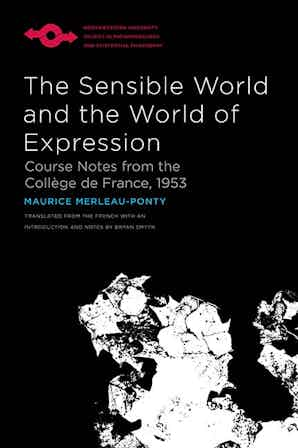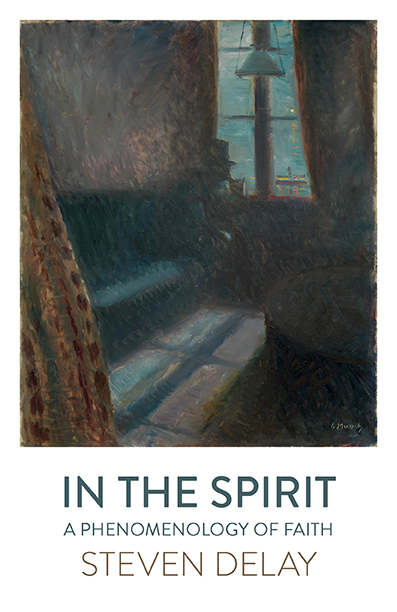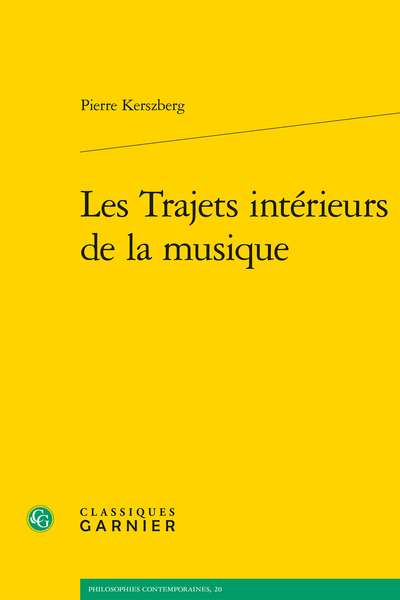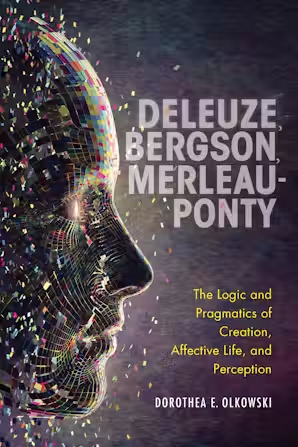 The Sensible World and the World of Expression: Course Notes from the Collège de France, 1953
The Sensible World and the World of Expression: Course Notes from the Collège de France, 1953
Studies in Phenomenology and Existential Philosophy
Northwestern University Press
2020
Paperback $34.95
320
Reviewed by: Antonia Schirgi (University of Graz)
Background
Merleau-Ponty suddenly died in 1961, at the young age of 53, at a time when he was still in the process of developing his thoughts and was working on a major book in which he wanted to further his thoughts and present a new ontology beyond a strict distinction of subject and object. For many years thereafter, notes that Merleau-Ponty drew up in preparation of this book that were posthumously published under the title The Visible and the Invisible and his second thesis (habilitation), the Phenomenology of Perception, were considered to be his most important works. Apart from some published articles and books, Merleau-Ponty left a number of unpublished manuscripts and working notes (more than 4000 pages). Some of these unfinished works and notes were published in the years after Merleau-Ponty’s death. In 1992 the majority of Merleau-Ponty’s notes were donated to the Bibliothèque nationale de France by his family and, since then, some previously unpublished materials have been published. These notes allow their readers to follow Merleau-Ponty’s thoughts from his early works to the later ones, to see continuities, moments of self-criticism as well as to understand his engagement with certain philosophical and other literature (cf. Saint Aubert 2011, 7).
After the completion of his second thesis, Merleau-Ponty was affiliated to the University of Lyon (1945-1949), later he held a professorship for child psychology at the Sorbonne (1949-1952). In 1952 he was elected to the Collège de France, he assumed his position there the same year, held his inaugural lecture on the 15th of January 1953 and began his regular teaching activities the following week (cf. xxxvii, endnote 1). The Sensible World and the World of Expression (Le monde sensible et le monde de l’expression) was the title of one of the two courses that Merleau-Ponty gave that year. The Collège de France is a unique institution; even if it is a public university, it does not offer regular introductory courses. The courses taught at the Collège are lectures and colloquia that permit the professors to present their ongoing thoughts and recent research to advanced students and/or the general interested public. Holding a chair in philosophy at this institution permitted Merleau-Ponty to further his philosophical thoughts, to return to some the phenomena that he treated in his first and second thesis as well as to some issues of his approach that he became aware of during the years after the completion of these books, and to present these thoughts to his audience. This return does, however, not present a break with his work and thoughts from the years at Sorbonne; rather, the insights that he gained during these years enriched his perspective on the phenomena (perception, the union of body and soul etc.) that he re-started to deal with.
In this review, I will discuss the translation of the posthumous edition of Merleau-Ponty’s notes on The Sensible World and the World of Expression. Furthermore, I want to give a brief overview of the course and of some of the key innovations that can be found in these notes. However, I will not discuss the content of the book in detail here.
The Manuscript
Detailed preparatory notes for the course on the sensible world as well as some further workings notes were part of the materials donated to the Bibliothèque nationale de France (BnF “don 92-21 de Suzanne Merleau-Ponty”, NAF 26993 X). Merleau-Ponty himself published a brief summary of this course (cf. Résumés de cours. Collège de France 1952-1960. Paris: Gallimard, 1968, 11-21), as he did of every course that he held at the Collège de France, but he did not publish any further materials. The preparatory and working notes were transcribed and published by Emmanuel de Saint Aubert and Stefan Kristensen in 2011 (MetisPresses).
Merleau-Ponty wrote up these notes in order to present the thoughts they contain to his audience; however, they are not immediately written for a public (like it would be the case with an article or a book). The manuscript contains some paragraphs that are written in full sentences. Nevertheless, large parts of the manuscript consist of incomplete sentences, bullet points, or listings of keywords. The editors of the French edition “strove to present Merleau-Ponty’s notes in a virtually verbatim form, and meticulous effort was made to keep the page layout as close as possible to that found in the actual notes themselves” (xliii). This effort of the editors is of high value for those working with Merleau-Ponty’s notes, as it permits readers to follow Merleau-Ponty’s thoughts in the way he developed them and not to be simply guided, and potentially misguided, by the interpretation of the editors. However, interpretations of a text like the present one, are challenging. As Merleau-Ponty’s notes are, to my knowledge, the only materials available (no student notes or similar document have been published or included in the collection at the Bibliothèque nationale de France), it remains unknown how Merleau-Ponty elaborated and discussed his thoughts during his lectures. Smyth argues for a limited interpretation of this manuscript. Even if these notes were of importance as they date back to a crucial moment in the development of Merleau-Ponty’s thoughts, the thoughts they contain were thoughts and work in progress. According to Smyth one should not over-hasty draw conclusions from these notes, from the perspective of a present-day reader who knows the further development of Merleau-Ponty’s work. Furthermore, the course notes should not be interpreted “in isolation from his other courses at the College de France” (xxxvi). Merleau-Ponty himself stated in his official course summary that it would still be necessary to further explore linguistic expression in order to define the philosophical meaning of the analyses perused during this course (cf. xxxvi; Merleau-Ponty 1968, 21). Therefore, Smyth argues that “we should be cautious about drawing any firm conclusions from them [these notes, A.S.] at all” (xxxvi). His call for a cautious interpretation of a manuscript like the present one seems adequate and valuable, but it might be a bit too far reaching. In this manuscript Merleau-Ponty discusses issues from a different angle than he did in other texts, and he elaborates thoughts more in details than he did in his published writings. Even if these notes were still work in progress, they can help readers to understand where Merleau-Ponty was coming from – which sources he considered important, in which direction his thoughts developed etc. To name an example, the importance of the writings of the psychiatrist and psychoanalyst Paul Schilder for Merleau-Ponty’s development of the concept of the body schema can only be understood from the present manuscript, not from Merleau-Ponty’s earlier writings (in the Phenomenology of Perception Schilder is only mentioned once). His discussion of the body schema in the present preparatory notes does not only deepen the thoughts Merleau-Ponty already developed in the Phenomenology of Perception, but it also shows new directions that he has been about to take with regards to this concept. Smyth is right that these preparatory notes should not be interpreted in isolation from Merleau-Ponty’s notes for his other courses and other materials, but does this not hold true for all of Merleau-Ponty’s writings? Even if certain writings, like the Phenomenology of Perception, were published by Merleau-Ponty himself, now that we know from courses like the present one as well as from articles and manuscripts that Merleau-Ponty himself was critical of some of his early positions and descriptions, it seems wrong to interpret the position he presented there as the position of Merleau-Ponty. Besides that, the problematic status is not unique to the manuscript of the course on the sensible world. None of the posthumously published manuscripts was intended to be immediately published. Even if Merleau-Ponty’s most renowned mature work – The Visible and the Invisible – is the publication of a manuscript that Merleau-Ponty prepared for publication, the manuscript that Merleau-Ponty left when he died in 1961 seems to have been far from a final version. We can only speculate how he would have further developed this manuscript would he had been given the time to do so.
The Translation
Editing notes, like Merleau-Ponty’s notes on the sensible world, is not an easy task; the same holds true for their translation. The present edition is a translation of the French edition (not of the original notes) (cf. xliii). The peculiar style of the manuscript that is, as I already mentioned, excellently reflected in the French transcript, has largely been preserved in the English translation. This means, for example, that words that Merleau-Ponty underlined, are underlined in the book, words that he crossed out, are included in the text, but crossed out as they were in the manuscript and so on (cf. xliv). Nevertheless, a translation is not simply a reproduction of a text in a different language, but it is the outcome of a process of interpretation. Smyth makes very clear that he is aware of his own interference in the text, when he states: “It is not possible […] to translate the notes as they stand without engaging in some disabbreviation, for there are simply too many uncertainties and ambiguities at the level of the words themselves.” (xlv) Hence, while the French edition in general does not add any terms to the text itself, but sticks to the original manuscript and its abbreviated style, the English translations “adds a very large number of terms within the text itself” (xiv). Thereby Smyth wants to enhance the readability of the text, “to facilitate as clear and unambiguous a reading of Merleau-Ponty’s notes as possible” (xiv), and to outline the “intended meaning of the transcribed words” (xiv), or rather the transcribed words as they were read and interpreted by the translator. Further to the additions that Smyth made to the text itself, his translations “includes a new and expanded set of annotive notes” (xliii), that go beyond the notes included in the French edition. In addition, Smyth outlines his choices concerning the translation of some crucial terms that are not easily to translate – the “hard cases” as he would say (cf. xlvi-li).
The Structure of the Course and of the Book
In general, Merleau-Ponty held two courses per year, each one comprised fourteen to fifteen lectures (cf. xxxvii, endnote 1). Often the topics of the two courses corresponded – this was also the case in 1953, when Merleau-Ponty dealt with issues of language in his second course – and on two occasions the two weekly courses were merged in order to develop one single issue more in depth (1956-1957 and 1957-1958, when Merleau-Ponty gave two intense courses on nature).
The Sensible World and the World of Expression comprises fourteen lectures. The course can be divided into four parts: (1) the first three lectures serve as a general introduction and overview of the course, (2) in lessons four to ten Merleau-Ponty discusses space and movement from a phenomenological point of view (including depth perception, a phenomenon that has become highly important for Merleau-Ponty), (3) the lessens ten to thirteen are dedicated to the body schema and (4) the last lesson dealt with expression (primarily with non-linguistic expression, but Merleau-Ponty gave some indications concerning linguistic expression too). As Smyth points out, Merleau-Ponty did not intend to discuss linguistic expression in detail in this course; however, he did intend to discuss “the passage from expression at the level of the sensible to cultural expression that is not yet language” (xvii), as it is the case in visual art. Nevertheless, Merleau-Ponty took more time than planned to elaborate the basis of his thoughts and therefore he could only discuss this move in his last lesson. Hence, the four parts were not given equal attention in the course (cf. xvii).
The book (the French and the English edition) contains the notes preparing the course, as well as working notes that Merleau-Ponty developed while preparing the course. These notes were not dated or classified by Merleau-Ponty. The editors of the French book categorized them thematically for their edition (cf. 129; Saint Aubert 2011, 171).
Merleau-Ponty’s Thoughts on the Sensible World
In The Sensible World and the World of Expression Merleau-Ponty primarily deals with the relation between the bodily human being and the sensible world. As I already mentioned, the relation between the world of expression is briefly touched in this course, but dealt with more in detail in his courses and writings on language. So, how does Merleau-Ponty understand this sensible world and what did his course aim at?
Sensible world = things
World of expression = cultural things, ‘use objects,’ symbols. (I didn’t say: universe of language)
Double goal: — deepen the analysis of the perceived world by showing that it already presupposes the expressive function.
— prepare the analysis of this [expressive] function through which the perceived world is sublimated, produce a concrete theory of mind. (9)
This brief definition and equally brief statement concerning the double goal of the course present the first lines of the preparatory course manuscript of Merleau-Ponty. Even if these first words seem to indicate a strong division of the sensible world and the world of expression, in what follows Merleau-Ponty makes clear that they are not separated, but “enveloped” (27) in each other. He is less interested in their analytic distinction, than in the dynamic passage from the one to the other in and through movement. As explained above, Merleau-Ponty did not follow his original plan for the course, in particular did he not manage to extensively discuss expression. Therefore, the course dealt more with the first part of his twofold goal than with the second part; indeed, after spending more time than expected on topics related to the first part of his general aim, only the last lesson remained for the second part (cf. xvii).
The main concepts that Merleau-Ponty deals with in this course are perception and expression (in its relation to the sensible world). Already on the first page of his manuscript Merleau-Ponty criticises his own approach towards perception, as he presented it in the Phenomenology of Perception and in a lecture that he gave at a meeting of the Société française de philosophie in late 1946 on the issue of the Primacy of Perception (lecture and discussion published with Northwestern University Press, 1964). He argues that his earlier works did not present strong and clear enough a break with classical positions, concepts and terms. With reference to the critique by Jean Hyppolite and Jean Beaufret, following his lecture in 1946, Merleau-Ponty acknowledges that readers and listeners could have gotten his thoughts wrong, as (1) one could have thought that the “primacy of perception” as he presented it was primacy in the classical sense, a “primacy of the sensory, of the natural given”, even if for him “perception was essentially a mode of access to being” (10); (2) one might have missed Merleau-Ponty’s ontological thoughts and taken his work as “only a phenomenology” (10); (3) therefore readers might have thought “that being was reduced to the ‘positivism’ of perception”, even if the perceived is “not possessed” by the philosopher, but “unquestionably before us” (10; underlining in the original). With reference to this discussion, Smyth argues that the main innovative aspect of this course “is that Merleau-Ponty is also revisiting the phenomenological analysis of the perceived world itself.” (xvi, emphasis in the original) However, Smyth presents an even stronger claim concerning the shift in Merleau-Ponty’s thoughts as he outlined them in the present course. According to him, Merleau-Ponty realized that his manner of presenting the problem of “how the sensible is taken up expressively […] made it unsolvable” (xvi). Perception was an “encounter with the sensible” and as such it was “already expressive” (xvi). Hence, Merleau-Ponty “came to realize […] that he didn’t get the phenomenology of phenomenology right, because he didn’t get the phenomenology itself right in the first place. So, he was still building his phenomenological method, not building on it” (xvi-xvii; emphasis in the original). Even if this reading indicates a strong shift in and important innovations of Merleau-Ponty’s thoughts on phenomenology and the phenomenological method, it does not negate the continuity of this development.
Besides perception, the other central concept that is discussed in this manuscript, is expression. Merleau-Ponty’s notion of expression is broad: Expression is “the property that a phenomenon has through its internal arrangement [son agencement interne] to disclose another [phenomenon] that is not or even never was given” (11; annotations and emphasis in the original). This definition already highlights the relational aspect of expression. Merleau-Ponty’s descriptions of perception and expression presuppose and involve a certain conception of the human being. As he already did in his early works, also in this course Merleau-Ponty opposes dualist conceptions. It is the body (in its entirety) that perceives and expresses. A body that is able to perceive and to express, is a body “as [a] given organization, [as] ‘sensory’ activity” and a “body that moves itself”, it is a body “[as a] response to ‘natural’ aspects of the world” and a body “[that] returns to the world in order to signify it [or] to designate it” (28; annotations in the original).
Particularly during the first two introductory lectures Merleau-Ponty discusses consciousness. In the second part of his course, he deals with space and movement, especially with depth perception and the perception of movement. The following lectures are dedicated to the body schema (a part that Merleau-Ponty seems to have added in the course of the semester) (xxii). The notes to this course are the first writings in which Merleau-Ponty aligned depth perception and (the perception of) movement with the body schema (cf. Saint Aubert 2011, 10-11).
Thereby Merleau-Ponty further elaborates concepts and thoughts that he already discussed in his earlier works and at the same time he introduces new concepts and thoughts and present some major shifts with regards to some concepts. Some of the core innovations that he outlines in these preparatory notes are:
- Merleau-Ponty rejects classical conceptions of consciousness (particularly in the first and second lecture). In his course on the sensible world, Merleau-Ponty introduces for the first time the concept of “écart” (generally translated as “divergence”) (xix). Merleau-Ponty elaborates this, not only but particularly well, by referring to the example of the perception of a circle. When a circle is perceived it offers its sense as a tacit sense (as opposed to the classical position, according to which sense is essence and given). The sense of a circle is a “certain mode of curvature” (13), namely the “change of direction at each instant always with the same divergence” [même écart] (20) and therefor the circle itself is a “mode of divergence” [mode d’écart] (20; underlining in the original). Merleau-Ponty develops this notion further in his preparatory and working notes for this course (e.g. working note on the Diacritical Conception of the Perceptual Sign or working note on Diacritical Perception, included in the present edition on the pages 158 and 159).
- When Merleau-Ponty discussed the concept of the body schema in the Phenomenology of Perception he presented it mainly as a sensory-motor unity. The Sensible World and the World of Expression is the first document in which the body schema is “understood in a much more active (or enactive) – because expressive – way” (xxii). At the same time, this is the first document in which Merleau-Ponty elaborates its relational dimension – the relation of the body schema and the (sensible) world (cf. 123) as well as the relation between different body schema (cf. Saint Aubert 2011, 13). The extension of the concept of the body schema has important implications for Merleau-Ponty’s understanding of movement and expression as well as their perception (movement is perceived by the entire body schema) and the relation to the world and others.
- In the context of his discussion of the body schema, Merleau-Ponty introduces the notion of praxis, a notion that he prefers to the notion of action (cf. 100). “The unity of the body schema is that of a praxis so construed, and the body schema is the background implied in [this praxis].” (100; annotation in the original) The praxis builds on the body schema (that is formed by the praxis, but that is more than a memory of previous praxis and/or experience) and continuously forms and transforms the schema. The praxis is a form of interaction with the world – it is not an “adaptation” to the world, at the same time it is not a world-less action performed by an isolated individual, it is “not only functional, but projection of the whole man” (100).
- Merleau-Ponty intensively discusses movement – what movement is, how movement can be perceived and how movement can be expressed in visual art (How can something that is stationary express movement? (cf. xxxv)). For Merleau-Ponty movement is not displacement, a variation of relations, and a place is not a “relation to other places” (33; underlining in the original), rather it is “first of all situation” (35; underlining in the original). Movement requires that the moving is in movement, that movement is something different to a series of different spatial positions, but rather something “absolute”, something that is “in the thing in motion and not elsewhere” (52). Movement entails an encroachment of here and there, before and after; something that is only possible if movement is neither only in the moving thing nor only in the perceiving or observing subject, but if it occurs “through a sort of mixing of me and the ‘things’” (52). The perception of movement is not simply an intellectual undertaking, rather it is the body schema in its entirety that perceives movement (cf. 64-65).
Consequently, in visual art movement is not something that is depicted by signs that indicate a change of place, but by the “envelopment of a becoming in a stance [attitude]” (124, annotation in the original). It is, for example, the body of a horse that is painted in a manner that shows its intentionality of movement. Movement is indirectly presented or a reference of something oblique. The language of “écart” plays into Merleau-Ponty’s description of the problem of movement in visual art. Movement is “[reference] of signifying to signified that is elsewhere and only appears through [the signifying], presentation through divergences with respect to a norm that is itself never given. Presentation of the world through variations in modulations of our being toward the world.” (125-126; annotation in the original)
Because of these and some further innovations the book is a valuable source for researchers working on and with the philosophy of Merleau-Ponty. Together with his published writings from the early 1950s and the manuscripts of his other courses it can help to better comprehend the development of his thoughts and to enrich one’s interpretations of his concepts.
Bibliography
Merleau-Ponty, Maurice. 1968. Résumés de cours. Collège de France 1952-1960. Paris: Gallimard.
Saint Aubert, Emmanuel de. 2011. “Avant-propos.” In: Le monde sensible et le monde de l’expression. Cours au Collège de France. Notes, 1953, edited by Emmanuel de Saint Aubert and Stefan Kristensen, 7-38. Geneva: MetisPresses.






